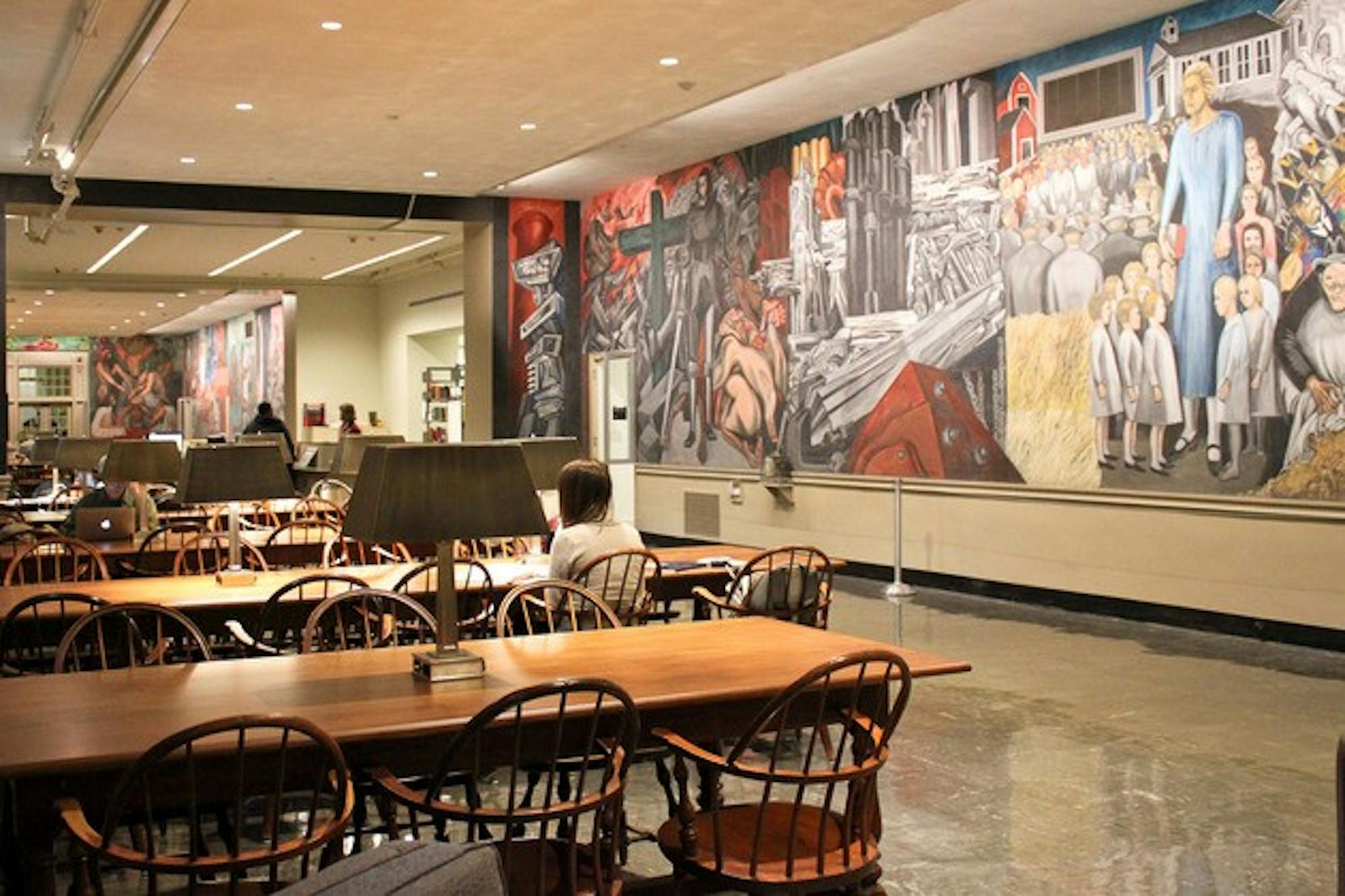The new LED lighting system, installed by Anita Jorgensen Lighting Design, is intended to better display the murals, according to art history professor Mary Coffey. The system of even, diffused lighting will become the model for how fresco murals are to be lit in the future, she said.
"You can see brushwork and color that you couldn't see before because of subtle areas that were in the shade," Coffey said. "Nothing seems to be artificially highlighted. You get the sense of the mural as a whole ... instead of subtly focusing on central figures or icons in the mural."
The LED lights do not give off heat or ultraviolet rays, protecting the paintings better than the old fluorescent lighting system, Katherine Hart, curator of academic programing at the Hood Museum of Art, said. UV filters were also added to the windows as a protective measure.
"Now, for the first time, you can see a more true color balance," Hart said. "Before, the blues and greens in the mural were less blue and green because they had this yellow overlay. Now there is a clarity."
Orozco painted the murals, a series of 24 panels entitled The Epic of American Civilization, from 1932 to 1934 as a visiting artist. The art department invited Orozco to teach fresco, an art form that underwent a major revival during the New Deal, to Dartmouth students, and then-President Ernest Hopkins supported the commission of the murals.
"People come from nationally and internationally to see these murals," Hart said. "They are only one of three murals done by Orozco in the U.S., and they are by far the most ambitious of the murals he did."
Anita Jorgensen also designed new desk lamps for the study tables in the room. Each lamp has several power outlets so that students can study in the room using laptops. One study table was removed to allow for the addition of sitting areas at the ends of the room. The company improved the acoustics of the ceiling to combat echoes and make for a quieter study space.
Circulation and reserve services supervisor Jase Harris said that the new lighting makes the Orozco Room a better environment for working and studying.
"The lighting itself used to be pretty dingy down there, so there was an oppressive feel," Harris said. "It almost gave you a headache to be down there."
John Guo '13 said he is underwhelmed by the scope of the renovations. He expected the space to change more than it has because the room was closed for a term and a half, he said.
"I thought they were going to do something to the murals, but they look the exact same," Guo said. "I'm not really sure about the couches on either side. I feel like they're trying to replicate first-floor Baker down here, which I don't really like because for me this has always been a super quiet area where no one talks. I really hope that they're not trying to change that."
The project to restore the room has been in the works for about 20 years, according to Hart. The Manton Foundation donated money for the refurbishing about six years ago, but the most intensive stage of planning occurred in the last year and a half, she said.
Orozco's mural depicts what Coffey calls an alternative history of the Americas that is rooted in indigenous civilizations and their downfall following contact with Europeans. It touches on themes of religious conflict, industrialization and exploitation, she said. The final scene is of a mixed race man reclining and reading a book.
"This is Orozco's very tentative way of suggesting a possible future where people of all races and classes have access to the same resources," Coffey said.
Knowledge of how students in the 1930s reacted to the painting of the mural is limited, Coffey said. However, at the time, some alumni were critical of Orozco's mural and called for its censorship. The College's decision to keep the mural as it was painted reflects positively on the school, Coffey said.
"They help to make people see that even in the 1930s when the College was predominantly white, upper class, the College had a more pluralistic understanding of the American and its relationship to that idea," Coffey said.
Wellesley College Latin American art scholar Jay Oles delivered a lecture titled "Mexican Pyramids on American Walls: Revivals, Restorations, Reinventions" on Friday to celebrate the reopening of the Orozco Room, which was followed by a reception.




